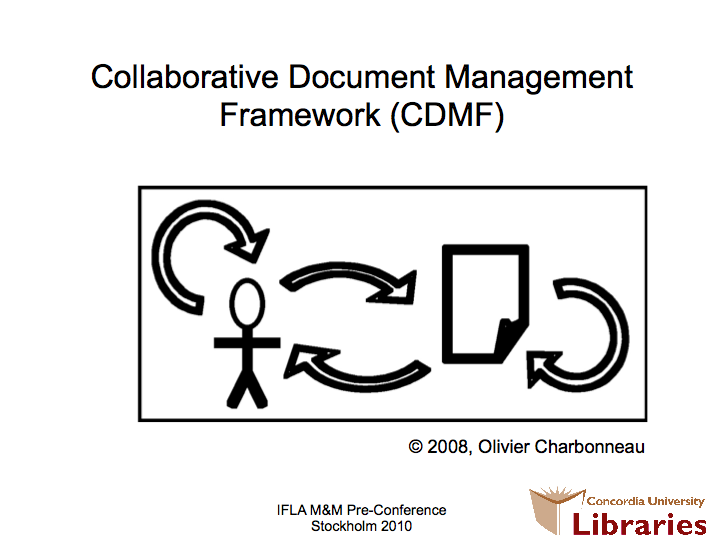Thoughts on a university library’s role in blended learning
We had a very interesting meeting today with Concordia’s Center for Teaching & Learning. The goal of the presentation was to explore partnership ideas, but we also discussed how the Library could contribute to a blended learning initiative at our institution.
Here are some thoughts about the blended learning environment (I purposefully use the environment paradigm, which I borrow from systems theory as posited by Luhmann)
Firstly, the main point brought was the idea of a “learning object” – a concept that we did not quite hammer out. I would offer this personal definition : a learning object is a type of document that presents information or knowledge to enable a learner to achieve a specific outcome. A learning object may (recursively) contain one or many other learning objects. Templates are useful tools to present this information or knowledge in a structured way. A learning object repository is a collection of curated learning objects, with associated metadata.
Secound, I would like to point out that there are many agents in this environment : the learners (obviously), the instructor or their assistant, the content owners and the system administrators. Each one of them has a role to play in the conception, organisation and provision of learning objects to learners.
Of course, the goal would be to identify all the learning objects and all the agents that are relevant in this environment. It may be easier to start with all the distinct templates of learning objects (as there may be too many learning objects).
Which now brings me to this conceptual model:

I devised this model during the course of my graduate degree in law (I’ve explained it on this blog post) and I’ve presented it at an IFLA Pre-Conference.
Now, this model tries to map out the Web 2.0 environment – I will make the claim that “blended learning” is functionally equivalent to Web 2.0 on a conceptual level (sorry for not prouving this point thoroughly – more on that later perhaps).
It is defined as 2 elements, documents and agents, interacting through 4 generic relationships: linking (document-document); conversations or intermediations (agent-agent); using (document-agent); and contributing (agent-document). This is meaningful in a discussion of a library’s role in a blended learning environment as is helps define exactly where it may be useful.
Specifically, I find that the priority is to identify areas where librarians may be contributing content – creating learning objects, followed closely to linking these learning objects to form paths through the knowledge base. Finally, librarians may play a role in the conversations that may happen in the environment between the various agents (focussing, as a priority, with the conversations that happen with the gatekeepers of knowledge: instructors and their assistants).
Of course, this is an off the cuff exploration of a complex topic, where I pin some broad concepts on a simplification of the real world. But it makes sense ! Please feel free to share comments or questions below…
Special thanks to Pamela Carson and Vince Graziano, two colleagues from Concordia University Libraries, for our very interesting conversation that was instrumental in organizing this post.